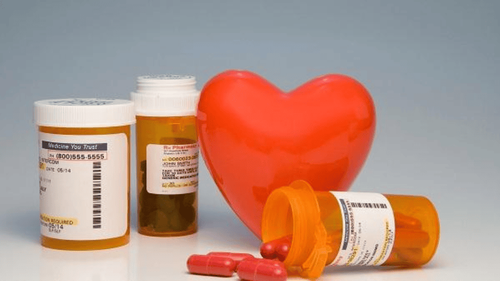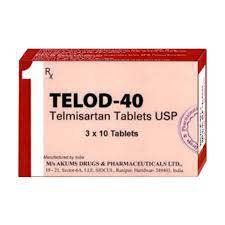This is an automatically translated article.
Belsan 150 medicine has the main active ingredient is the active ingredient Irbesartan with the content of 150mg and other excipients with the drug. This is a cardiovascular drug used to treat primary hypertension.
1. What is Belsan 150?
Belsan 150 medicine has the main active ingredient is the active ingredient Irbesartan with the content of 150mg and other excipients with the drug. This is a cardiovascular drug used to treat primary hypertension.
Belsan 150 is made in the form of tablets, suitable for direct oral administration. Packing is a box of 2 blisters, each blister contains 14 pills.
2. What diseases does Belsan 150 treat?
Belsan 150 is used in the treatment of diseases as follows:
Treatment of primary hypertension. Treatment of kidney disease in people with type 2 diabetes and hypertension. Patients should pay attention to comply with the use of Belsan 150 in accordance with the indications, including the uses and functions for those listed on the Belsan 150 instruction sheet or the prescription sheet of the treating doctor.
3. How to use and dose of Belsan 150
3.1 How to take Belsan 150 Belsan 150 is used orally, the patient can take it with or without a meal.
3.2. Dosage of the drug Belsan 150 For adults:
The recommended initial and maintenance dose is usually 150 mg x 1 time / day. Therapeutic doses usually provide better 24-hour blood pressure control than 75 mg. In those who cannot adequately control blood pressure with a therapeutic dose of 150 mg, the dose may be increased to 300 mg or additional antihypertensive agents may be used. In particular, when using a diuretic such as hydrochlorothiazide for a synergistic effect with the active ingredient Irbesartan. For persons with type 2 diabetes with hypertension, treatment should be initiated at 150 mg once daily and titrated to 300 mg once daily - the preferred maintenance dose for treatment kidney disease treatment. 3.3. Use of drugs for special subjects For people with kidney failure: No dose adjustment is required for people with kidney disease. Initiation with a lower dose (75 mg) should be considered for those on dialysis. For patients with hypovolaemia: Consider an initial dose of 75 mg once daily. For patients with hepatic impairment: No dose adjustment is required for patients with mild and moderate hepatic impairment. There is currently no experience with the use of the drug in people with severe hepatic impairment. Elderly: Although initiation of treatment with 75 mg should be considered in persons over 75 years of age, dose adjustment is not usually necessary when used in the elderly. Children: The safety and effectiveness of irbesartan in children 0-18 years of age have not been established. Therefore, the use of Belsan 150 is not recommended for this group of subjects. 3.4. Overdose / Missed Dose Treatment doses up to 900 mg used in adults for a period of 8 weeks did not cause any toxicity. When drug overdose, clinical symptoms are more likely to occur are hypotension, arrhythmia. Currently, there is no specific information on the treatment of overdose of the active ingredient Irbesartan. However, when you discover someone has overdosed, you need to take them to medical facilities immediately. The doctor may prescribe vomiting and/or gastric lavage, using activated charcoal.
4. Undesirable effects of Belsan 150
Adverse effects caused by Belsan 150 are generally mild and transient.
For people with hypertension and type 2 diabetes with kidney disease: the most prominent undesirable effect is dizziness, dizziness when changing positions or postural hypotension. There were no cases where the drug had to be discontinued due to this side effect.
The following side effects have also been reported very rarely during post-marketing surveillance of Belsan 150:
Metabolic and nutritional disorders: increased blood potassium. Nervous system disorders: dizziness, headache, dizziness, taste disturbance. Ear and Vestibular Disorders: Tinnitus sensation. Heart disorders: heart palpitations. Respiratory disorders: choking cough. Gastrointestinal disorders: diarrhea, dyspepsia, nausea and vomiting. Liver and biliary disorders: abnormalities in liver function tests, hepatitis. Musculoskeletal, connective tissue and bone disorders: myalgia, arthralgia. Renal and urinary disorders: impaired renal function including renal failure in at-risk individuals. Systemic disorders and pathology at the site of drug use: asthenia . Usually, the side effects will go away when you stop using Belsan 150. You need to take the initiative to immediately notify your treating doctor or medical person if you suspect any unwanted effects of Belsan 150.
5. Interactions of drugs Belsan 150
Diuretics and other antihypertensives: Other antihypertensive agents may enhance the antihypertensive effect of Belsan 150. However, Belsan 150 has also been combined with other antihypertensive drugs without problems. Examples include beta-blockers, long-acting calcium channel blockers or thiazide diuretics. Pre-treatment with high-dose diuretics may cause hypovolemia and a risk of hypotension when initiating treatment with Belsan 150. Potassium-containing preparations or potassium-sparing diuretics: Concomitant use of Belsan 150 with potassium-sparing diuretics, potassium-containing salt substitutes, potassium supplements or other drugs that increase serum potassium may cause increase potassium in the blood. Therefore, concomitant use is not recommended. Lithium: Increased blood levels and increased toxicity of lithium have been reported in combination with ACE inhibitors. Similar effects have also occurred with Belsan 150, although very rarely. Therefore, combination therapy with these drugs should be avoided. Non-Steroidal Anti-Inflammatory Drugs: When angiotensin II antagonists are co-administered with non-steroidal anti-inflammatory drugs and non-selective non-steroidal anti-inflammatory drugs, the antihypertensive effect of Belsan 150 may be reduced. . As with ACE inhibitors, the concomitant use of angiotensin II antagonists and non-selective nonsteroidal anti-inflammatory agents may increase the risk of impaired renal function, possibly leading to acute renal failure. and hyperkalemia, especially in patients with pre-existing renal impairment. The coordination must be cautious, especially with the elderly. Belsan 150 users must be well hydrated and monitor renal function after starting the combination and periodically thereafter. Information on other drug interactions Belsan 150 : In clinical studies, the pharmacokinetics of the active ingredient Irbesartan was not altered by co-administration with hydrochlorothiazide. The active substance Irbesartan is metabolised mainly by CYP2C9 and to a lesser extent by glucuronic conjugation.
6. Some notes when using Belsan 150
6.1. Contraindications of the drug Belsan 150 People who are sensitive or hypersensitive to the active ingredient Irbesartan or to any of its ingredients. Use of combination of the active ingredient Irbesartan and drugs containing aliskiren in people with diabetes mellitus and renal failure. Pregnant women during the second and third trimesters of pregnancy. 6.2. Precautions when using Belsan 150 People with intravascular volume depletion: In patients with hypovolemia, such as salt and water loss caused by strong diuretics, a diet that restricts salt and pepper Diarrhea or vomiting, symptomatic hypotension may occur, especially after the first dose of the drug. Your doctor will prescribe treatment for these conditions before using Belsan 150. Patients with hypertension Renal artery stenosis: Increased risk of severe hypotension and impaired renal function in patients with bilateral renal artery stenosis or unilateral renal artery stenosis in the only functioning kidney. Treatment with drugs that affect the renin-angiotensin-aldosterone system. This effect can also be experienced with angiotensin II receptor antagonists, including Belsan 150. Patients with renal insufficiency and renal transplantation: Periodic monitoring of serum potassium and creatinine is recommended when using Belsan 150 in patients with renal impairment. Children: There are currently insufficient data on the use of Belsan 150 in children. For pregnant women: Belsan 150 is not recommended during the first trimester of pregnancy. The use of this drug is contraindicated in the second and third trimesters of pregnancy. The reason is that in the second and third trimesters, the drug is toxic to the fetus, namely decreased kidney function, less amniotic fluid, delayed ossification of the skull and toxic to the neonate such as renal failure, hypotension. pressure, increased potassium in the blood. Lactation: There is no information regarding the use of Belsan 150 during breast-feeding. Therefore, its use is not recommended and is preferable to alternative therapies that have been shown to be safe during pregnancy, especially in neonates and premature infants. Effects of Belsan 150 on the job (operators of machinery, people driving vehicles, people working at height and other cases): There are no studies on the effects of Belsan 150 on the ability to drive. vehicles and operating machinery. Irbesartan does not impair the patient's ability to drive and use machines. However, undesirable effects such as dizziness and headache have been reported with Irbesartan and caution should be exercised when driving or operating machinery while the above symptoms persist. Belsan 150 medicine has the main active ingredient Irbesartan 150mg and other excipients with the drug. This is a cardiovascular drug used to treat primary hypertension. To ensure the effectiveness of treatment and avoid unwanted side effects, patients need to strictly follow the instructions of the doctor, professional pharmacist.
Follow Vinmec International General Hospital website to get more health, nutrition and beauty information to protect the health of yourself and your loved ones in your family.
Please dial HOTLINE for more information or register for an appointment HERE. Download MyVinmec app to make appointments faster and to manage your bookings easily.













